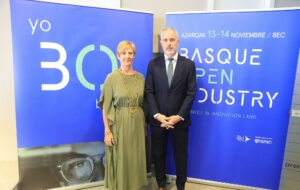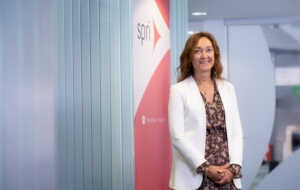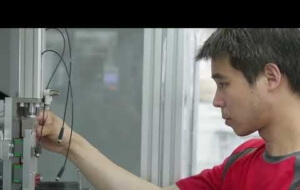

Within the industrial landscape, the adoption of Additive Manufacturing is providing companies with innovative, customised and technologically advanced solutions to meet the shifting demands of their customers.
By creating metallic objects by adding the material layer by layer, instead of using the techniques of casting, moulding, cutting and other traditional methods, this advanced manufacturing approach makes it possible to customize the final product according to the needs of the sector and the customer.
Here the SPRI Group, together with the BDIH and its Advanced Manufacturing node, describes the main advantages and characteristics of one of the most relevant metal product manufacturing techniques, metal fusion, and a selection of the capacities available in the Basque Country to experiment with these techniques.
First of all, it is important to clarify the concept of additive metal manufacturing; a process used through which three-dimensional objects are created from a digital product or file. Metal Fusion is an “additive” technology that works by melting very thin layers of metal powder using a laser, known as selective laser melting (SLM) or direct metal laser sintering (DMLS). The metal powder spheres are fused locally at the point of impact of a laser beam. When they solidify again, they form a horizontal layer and fuse together in the lower layer.
Why is Metal Fusion of interest to manufacturers?
Metal Fusion makes it possible to test and validate new geometric shapes on a smaller scale before progressing to mass production, reducing the risk of errors and retooling and in turn leading a greater success in production. At the same time, it validates the procedure to ensure that it complies with all manufacturing stages in a similar and symmetrical way and is also capable of producing per unit on demand.
Some of the main advantages of using this additive metal manufacturing technique, include the ability to create components with a high level of internal and external complexity and the capacity to create functional parts adapted to the latest needs of your sector or customer; it also allows for thermal regulation of the part to obtain the desired geometry and the production of unique and geometrically advanced parts.
The Basque Country has been at the forefront of integrating technologically advanced solutions into its industrial system over the last decade, and additive metal manufacturing is one of the technologies that the Basque industrial system is incorporating. To this end, the members of the BDIH make their experience and equipment available to Basque SMEs to make the incorporation of these technologies easier.
From CEIT, the Basque industry has access to its Multifunction Laser Cell designed for two types of applications: additive manufacturing of metal parts by means of the LMD (Laser Metal Deposition) process and laser post-processing of manufactured parts. The services offered include:
On the other hand, LORTEK has an Additive Manufacturing Cell by SLM for the application and integral development of metal additive manufacturing in powder bed fusion technology. The main services offered include:
Here is just a sample of how the BDIH’s Additive Manufacturing node allows Basque companies to incorporate new models, concepts and techniques in the way they produce their parts and products.If you’re interested in exploring what the node offers, follow this series of articles on Additive Manufacturing 4.0 where we tell you in detail what its capabilities, assets and services are in a practical and personally tailored way.
Contact the BDIH to find out how we can bring your company closer to the solutions that interest you most.
 19 September, 2024 Digitalisation
19 September, 2024 Digitalisation 27 September, 2023 Digitalisation
27 September, 2023 Digitalisation 5 October, 2021 Digitalisation
5 October, 2021 Digitalisation 5 October, 2021 Digitalisation
5 October, 2021 Digitalisation 1 October, 2021 Digitalisation
1 October, 2021 DigitalisationFor SMEs, for diversifying markets, internships abroad, international tenders, non-reimbursable subsidies to consolidate exports, subsidies for deployments or specific training in internationalisation.
You’re interested, right?